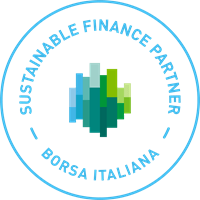Corporate sustainability strategy and tools: from ESG Assessment to Sustainability Report

In the ever-changing corporate landscape, awareness of ESG (Environmental, Social and Governance) criteria is more crucial than ever for companies aiming for a sustainable and profitable future. But how can companies assess and improve their impact in these areas? Let’s find out together. Measuring sustainability: the tools An essential factor in the sustainable strategy is the monitoring and verification of business processes, a context in which tools such as the Sustainability Report and ESG Assessment, aimed at measuring the business impact and daily operations in terms of sustainability, are placed. Monitoring and auditing business processes, and the impact they have on the environment, enables companies to assess their performance from a sustainable and integrated perspective. What this means. It means evaluating the processes of the entire business organization from an ESG (Environmental, Social and Governance) perspective, measuring the impact that business activities have on both the environment and society. Understanding the importance of tools such as the ESG Assessment and the Sustainability Report is key to defining long-term sustainable strategies and goals by analyzing and defining the baseline. The ESG Assessment in Investor Relations. The ESG Assessment is an assessment tool that analyzes a company’s performance against environmental, social, and governance criteria. The goal is to assess how the company manages and addresses issues related to sustainability and corporate social responsibility. Through a thorough ESG Assessment, a company can demonstrate to investors its commitment to the path of sustainable and responsible growth, increasing its value. An increase that in turn generates greater competitiveness in the marketplace relative to competitors. In addition to reputational benefits, the ESG Assessment brings a number of essential benefits to the company, including: More efficient risk management, because it is a useful tool for identifying existing gaps and actions to be implemented, with a view to protecting the company from possible future negative impacts; An increase in operational efficiency, resulting from the identification of waste and inefficiencies. Correcting these problems reduces environmental impact and leads to significant cost savings, improving overall operational efficiency; Employee engagement and motivation. Through strategies to analyze and improve corporate culture, employees are found to be more motivated and contribute concretely to supporting and promoting sustainable actions and values in the company. In a world where sustainability is at the center of business decisions, the ESG Assessment is a key tool for guiding companies toward ethically and socially responsible growth. Sustainability reporting: what it is and why it is important Integrating sustainability into daily operational processes produces two results: Waste reduction; Promotion of social responsibility within the company. The Sustainability Report is the primary vehicle through which the company communicates its sustainability efforts and successes. It is a tool for reporting and communicating one’s performance in the ESG area, allowing people to communicate and share their efforts to improve their social, environmental and economic impacts. The main objective of the document is to provide a comprehensive overview of the sustainable activities and strategies adopted by the company, thus helping to build stakeholder trust and demonstrate commitment to sustainability from a practical perspective. Preparing a Sustainability Report means opening up to external feedback, involving workers directly in the process of improving sustainable business strategies, and implementing processes that have the potential to produce positive impacts on society and the environment. Sustainability reporting and evaluation standards Tools for measuring and verifying business processes from a sustainable perspective, such as the Sustainability Report, are prepared according to standards and guidelines set by International Bodies. Among the most important standards and references, in light of which to evaluate the results present in a Sustainability Report, are: The Global Reporting Initiative (GRI) standards: one of the most widely used standards for sustainability performance reporting. The guidelines of the Global Reporting Initiative, the international body that prepared the GRI standards, provide a comprehensive framework for corporate sustainability reporting, covering economic, environmental and social aspects; Sustainability Accounting Standards Boards (SASB) criteria: standards set by the international nonprofit organization Sustainability Accounting Standards Board, identify ESG factors related to each individual industry or business subsector to which they relate; The recommendations of the Task Force on Climate-related Financial Disclosures (TCFD): the TCFD focuses on climate-related financial disclosures. Its recommendations focus on how companies should disclose news related to climate change and associated risks; ISO 26000: provides guidelines on social responsibility and sustainability, offering a general framework for companies that want to integrate sustainability into their business practices; The Carbon Disclosure Project (CDP): requires companies to disclose information about their carbon footprint and strategies to address climate-related risks. The international standards provide a guideline for stakeholders and investors in assessing the results of the Sustainability Report, and are a corollary of principles applicable to all corporate entities. Measuring and communicating sustainability to enhance corporate value The promotion of sustainability and the practical application of ESG criteria include monitoring, measuring, and reporting the impact that business processes have on the environment, society, and internal governance. The ESG Assessment and the Sustainability Report allow the company’s performance to be measured and evaluated from both environmental and social perspectives. Both are part of a strategy to increase corporate value and create value for the community in which the company is embedded. Adopting sustainable strategies, promoting a socially responsible corporate culture, and innovating the way we do business represent concrete commitments to lasting growth. Learn about Tecno’s sustainability solutions for investigating and reporting on your company’s sustainability performance.
Sustainability Report: what is it and to whom is it addressed?

The Sustainability Report is a tool through which companies measure the environmental, social and governance performance of their production activities, with the aim of communicating to stakeholders their commitment and concrete initiatives taken in the sustainable sphere. This is a document that falls under the reporting and accountability activities related to ESG (sustainable reporting) objectives, the standards of which are dictated and updated by international industry regulations. A practice that allows companies to transparently and clearly communicate their activities and their impacts in relation to environmental, social and economic aspects. Drawing up the Sustainability Report provides a snapshot of the company’s present situation, tells stakeholders inside and outside the organization what has been done in the ESG sphere, how the actions taken have contributed to the achievement of the SDGs defined by the United Nations, and still puts in black and white the goals that in the sustainability sphere the company has chosen to pursue for the future. Within sustainable reporting are various frameworks, i.e., standard corporate reporting templates, such as the social budget, integrated budget and sustainable budget. Sustainability Reporting and, more generally, sustainable reporting have been the subject of numerous regulatory initiatives within International Organizations (such as Global Reporting Initiative) and Institutional Bodies (such as the EU Commission), with the intention of creating a socially responsible and sustainable corporate paradigm over the long term. Demonstrating the institutional commitment to the promotion of a green-conscious corporate and social culture, as of this year-and by 2026- becomes mandatory to prepare a Sustainability Report for companies covered by the requirement. In the next section we will look at the legal process that led to the introduction of this obligation. European legislation on sustainable reporting Sustainable reporting was introduced into the European legal system by two Directives: The Non-Financial Reporting Directive, or Directive 2014/95/EU, on the increase, facilitation and harmonization of information about sustainable business practices to be provided to stakeholders;this Directive introduced arequirement for large companies to prepare the Non-Financial Statement. The Corporate Sustainability Reporting Directive (CSRD), or Directive no. 2464/2022, issued as part of the European Green Deal, which extended the sustainable reporting obligation to SMEs and medium-sized companies as well;this Directive represented a turning point in regulatory policies on the promotion of sustainability, as it added the introduction of sector-specific standards to the extension of the reporting obligation. As anticipated, both Directives are part of the larger European Green Deal project, a group of policy and legislative initiatives promoted by the European Commission that aim to achieve climate neutrality by 2050. In January 2024, as the CSRD Directive comes into effect, the number of entities obligated to sustainability reporting and Sustainability Reporting increases. Specifically: Publicly traded companies, and large entities ( more than 500 employees) with total assets of 20 million; S.r.l. and Public Interest Entities that meet the same size and asset requirements mentioned above; From January 1, 2025 large enterprises that have total assets of twenty million or an average number of 250 employees per year; From January 1, 2026 SMEs and other listed medium-sized enterprises. When the Directive is transposed into national law, the Italian legislature could further extend the number of companies required to comply with the sustainable reporting requirement to include other types of economic organizations. Sustainability reporting: the ESG factors and ESRS standards The Sustainability Report makes efficient communication of information about the company’s business practices through transparency, clarity and adherence to the standards on the basis of which it is prepared. The purpose of the Sustainability Report is not only about communicating the commitment to sustainability pursued by the company, but also about the practical application of ESG factors in internal organization and investment policies. ESG factors, which stands for Environmental, Sustainability and Governance, guide corporate operations and their external impact, both from an environmental and social perspective. They are factors that guide the investment choices of a company and its stakeholders because they measure and quantify the level of social and environmental responsibility an organization decides to take on. Each Sustainability Report is prepared according to standards, the purpose of which is to standardize and harmonize the sustainable reporting systems adopted by companies nationally and internationally (an example is the guidelines issued by the Global Reporting Initiative). Compared to previous legislation, the CSRD Directive introduced industry-specific standards: the European Sustainability Reporting Standards (ESRS), a set of 12 sustainability standards of which one part is dedicated to the relevant industry sector. The first two standards are general in nature, while the next two cover factors such as: climate change, marine resources and biodiversity, resource use and circular economy, the role of workers within the business cycle, and business conduct. The latter understood as both broad corporate culture and corporate social responsibility. Including specific information and prospectuses within the Sustainability Report is another step toward transparency of information, the basic concept of sustainability reporting. The importance of the Sustainability Report: dual materiality The Sustainability Report is a reporting document with a dual purpose: To inform stakeholders, stakeholders and society of the concrete commitment made by companies to sustainability through transparent communication about the impact of business activity on society and the environment; Obtain a measure of how much exogenous factors such as pollution, climate change, etc. may impact the business activity conducted. This principle has been called the EU Commission’s principle of dual materiality and represents a new way of understanding corporate sustainability, that is: not only a policy of respecting the environment and external society, but also a way of achieving financial, economic and social progress for the company. The Sustainability Report with Tecno: a responsible choice Drawing up a Sustainability Report can also be a voluntary choice for those companies that wish to provide an informative overview about the sustainable measures they have undertaken, even though they are not among those required to report. The benefit to be derived concerns the corporate image and the trust customers place in a transparent and sustainable brand, as well
Corporate sustainability and ESG factors: the updated guide to 2024
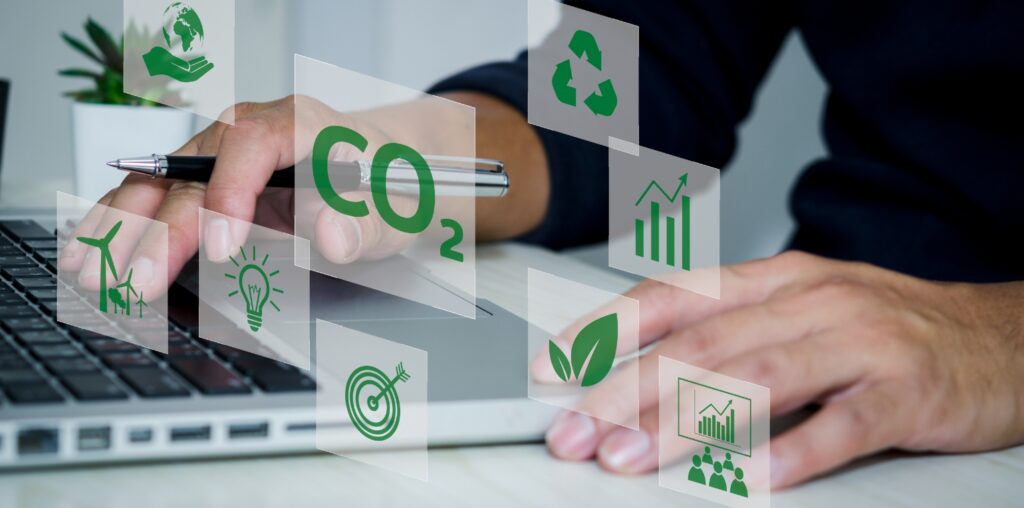
The essence of a sustainable esg-oriented strategy Integrating sustainability into business operations, what does it mean? The future of business: sustainability and ESG investment Why should a company focus on ESG investments? Who is in charge of sustainability in the company? Sustainability and brand reputation: from strategy to communication In a global context in which environmental issues, corporate and individual social responsibility, and ethical resource management have become essential elements of the sustainability debate, adopting an approach that implements and contributes to the well-being of the planet is an indispensable condition for achieving progress. Among the main actors involved in the sustainable paradigm are precisely the companies, which are increasingly affected by market demands, regulations and recommendations of global and state organizations focused on combating climate change and aimed at achieving the defined targets for emission reductions to 2030 and 2050. Let’s look together at how companies can address sustainability and why it is important to act on ESG for business growth. The essence of a sustainable esg-oriented strategy Corporate sustainability represents a strategic and responsible approach to the management of business activities, taking into account the economic, social and environmental impacts generated throughout a company’s life cycle. Reasoning from a long-term perspective, translates into adopting sustainable solutions with reference to both the governance models employed and the production methods. The role of companies, in the field of sustainability, is twofold: on the one hand, they are responsible actors for the impact their production activities have on the surrounding environment and society; on the other hand, they have the potential to become the main promoters of a sustainable culture that looks to the future. Based on the principles contained in the 2030 Agenda and the Sustainable Development Goals, corporate sustainability can be translated into strategies aimed at applying criteria that can be traced back to the ESG paradigm, an acronym that stands for the three pillars of sustainability, which are essential for the sustainable transition of companies: Environmental; Social; Governance. Adopting a sustainable approach makes companies, stakeholders and everyone involved a center of value creation for society. Integrating sustainability into business operations, what does it mean? Integrating sustainability into business operations means incorporating economic, social and environmental considerations into a company’s day-to-day decisions and management practices. Corporate operations represent the fertile ground on which to employ sustainable strategies pertaining to ESG (Environmental, Social, Governance) factors on a daily basis; a ground on which concrete and beneficial actions can be taken: Environmental footprint analysis, which is the assessment and measurement of the environmental impact of business operations. An example of this type of analysis is the organization’s carbon footprint assessment, which is useful for analyzing and quantifying the CO2 emissions produced by the company and related to Scope 1, 2 and 3; Clear definition of sustainability goals, carried out in line with the Sustainable Development Goals found in the United Nations 2030 Agenda, and internationally defined sustainable best practice guidelines; Adoption of investment policies aimed at improving energy efficiency, such as adopting renewable energy sources or implementing energy management practices; Creation of a sustainable supply chain, which translates into choosing to partner with suppliers who meet high sustainability standards so that environmental impacts are assessed and monitored throughout the supply chain; Integration of corporate social responsibility (CSR) for the purpose of local community involvement and the promotion of an ethical corporate culture; Transparent and clear communication of the sustainability policies adopted, through the preparation of documents aimed at reporting on its ESG performance (Sustainability Report, CFO report, etc.), to engage any stakeholders and at the same time increase brand trustworthiness for consumers; Involvement of employees in all sustainability initiatives, through training programs and internal events aimed at employee empowerment and common growth; Real investment in research and development projects in sustainable innovation. The future of business: sustainability and ESG investment In the increasingly competitive business landscape of 2024, a focus on corporate sustainability is no longer a choice, but an imperative necessity for companies that aspire to long-term success. Investing in sustainability is a strategic move, as it provides a long-term view of the company’s business and its concrete impact. This includes investments based on environmental, social and governance (ESG criteria), which have become popular as a result of more and more investors’ desire to integrate sustainability into financial decisions. The acronym “ESG” stands for three factors: Environmental (Environmental): covers practices related to the environment, such as greenhouse gas emissions, sustainable resource use, climate change, and waste management; Social (Social): involves social aspects such as corporate social responsibility, employee management practices, diversity and inclusion, worker health and safety, and relations with local communities; Governance (G): covers corporate governance structure, corporate ethics, transparency, board independence, and conflict of interest management. ESG investments cover all investment policies inherent in the three factors mentioned above. Why should a company focus on ESG investments? The benefits associated with ESG investments are numerous, to the point of making this type of instrument particularly attractive to investors. Specifically, among the inherent benefits associated with ESG investments are: Risk mitigation.ESG investments help identify and mitigate risks associated with environmental, social, and governance issues that could adversely affect companies’ financial performance. Long-term financial performance.Companies that adopt sound ESG practices are more resilient and manage market changes better, promoting more sustainable long-term financial performance. Stability. Good and efficient corporate governance is, for investors, a greater guarantee of long-term stability; therefore, entities that strengthen their governance from a sustainable perspective increase their chances of winning over investors. Operational efficiency and cost savings. Adopting sustainable practices often leads to greater operational efficiency and long-term cost savings. Investing in greener technologies and processes not only reduces environmental impact, but can also result in energy savings and lower operating costs over time. Talent attraction and retention. New generations of talent are strongly values-oriented. A clear commitment to sustainability is a powerful tool for attracting and retaining employees. Companies that demonstrate social and environmental responsibility attract motivated professionals, helping to create an engaged and
The Transition 5.0 plan and support for sustainable enterprises

The Transition 5.0 plan, provided for in the PNRR decree law, was finally introduced with the approval of the Council of Ministers on Feb. 26, 2024, and made official on March 2 with its publication in Official Gazette no. 52. In addition to the necessary parliamentary confirmation within the standard 60-day period, two additional implementing decrees are awaited to ensure full implementation, with the first decree expected to be issued within 30 days, i.e. by April 1. The Transition 5.0 plan represents a crucial evolutionary phase, which has already begun with the Transition 4.0 plan financed under Mission 1 – Component 2 “Digitization, Innovation and Competitiveness of the Production System” of the NRP; a moment characterized by the convergence of technological innovations, environmental changes and social transformations. In this article we will delve into the evolution and new features introduced by the Transition 5.0 plan. Transition 5.0 decree: what’s new in the plan for green and digital transition Prior to the development of the most recent plan, there were already national forms of business support contained in the National Industry 4.0 Plan, the legal basis for the facilities contained in the Transition 5.0 plan. The National Industry 4.0 Plan (or Transition 4.0) was funded with the aim of supporting the digital transformation of businesses by incentivizing private investment in goods and activities to support digitalization through the recognition of a tax credit for the purchase of: Purchase of tangible goods; Purchase of intangible assets 4.0 (e.g., advanced software); Purchase of traditional intangibles (e.g., basic software); 4.0 training activities. In the Transition 5.0 Plan, companies will be granted an automatic tax credit, without any prior assessment, and without discrimination related to company size, business sector or location. Specifically, The Plan provides 6.3 billion euros in resources for Italian companies engaged in digital and sustainable transition projects. This considerable support is in addition to the 6.4 billion provided by the Budget Law for a total of 13 billion euros to be distributed over the two-year period 2024-2025. Transition 5.0: eligible investments and facilities granted Facilities under the Transition 5.0 plan are granted to Italian enterprises facing the following investments: purchase of tangible and intangible assets essential for the company’s activity, included in Annexes A and B of Law no. December 11, 2016, no. 232, as long as they are integrated into the business system and lead to an overall reduction in energy consumption: by 3 percent for the production structure covered by the innovation project or, alternatively, by 5 percent for the processes involved in the investment; investment in new tangible assets aimed at autonomous energy production through renewable sources for domestic consumption, except biomass, including devices for storing the energy generated; expenses for staff training, provided by external entities, up to 10 percent of the investment made and up to a maximum of 300,000.00 euros. The decrease in energy consumption must be certified through an assessment (ex ante) that identifies the energy savings achievable through the planned investments and an assessment (ex post) that demonstrates the actual implementation of the investments in line with the initial assessment. Certifications must be issued by Independent Evaluation Bodies, such as Energy Management Experts (EGE) and Energy Service Companies (ESCo), provided they are certified by accredited bodies. As for solar panels (for the above-mentioned autonomous energy production), only those manufactured in Europe as specified in Article 12(1)(a), (b) and (c) of Decree Law No. 181. For these investments, companies can apply for the benefit provided by the Transition 5.0 plan, which is a tax credit that varies according to the amount of the investment and the percentage of energy savings achieved. The rates are as follows: 35 percent of the cost for investments up to 2.5 million; 15 percent of the cost for investments over 2.5 million euros and up to 10 million euros; 5 percent of the cost for investments over 10 million euros, up to a maximum of 50 million euros in eligible costs per year per beneficiary enterprise. These rates increase to the: 40%, 20% and 10% if there is a reduction in energy consumption of the production facility of more than 6% or a reduction in energy consumption of processes of more than 10%; 45%, 25% and 15% if there is a reduction in energy consumption of the production facility of more than 10% or a reduction in energy consumption of the processes affected by the investment of more than 15%. The tax credit can be used only by offsetting, through the F24 form, to be initiated by Dec. 31, 2025, and, in any case, from the fifth day following the notification of the granting order. Improve your company’s energy performance and reduce consumption The Transition 5.0 plan represents an opportunity for companies that intend to start a path aimed at green and digital transition. The opportunity to define a strategy to have a greater awareness about their energy consumption, the potential for optimization (in terms of costs and resource savings) and the environmental impact attributable to their organization. Take advantage of our EGE experts’ expertise, energy efficiency solutions and industrial data monitoring to get in on the 5.0 transition tax credit. Let’s work together on your company’s green and digital transition.
Energy-intensive enterprises: mechanism for accessing benefits changes

The reform of D. L. 131/2023 redefines the mechanism of facilities granted to energy-intensive enterprises, which takes effect on January 1, 2024. There are many new features in this regard, for example: the Cassa per i Servizi Energetici e Ambientali (CSEA) arranges the electrivori portal (effectively creating a new definition for energy-intensive enterprises); enterprises included in the CSEA’s 2013 and 2014 lists are excluded from the new relief mechanism; and as of 2024, the relief brackets disappear in favor of a more precise definition. Enterprises that record large electricity consumption can take advantage of this opportunity to recover significant amounts of money and optimally manage their available resources. Let’s get to know together how to access the facility, the requirements and the obligations of enterprises. Find out how to get the facility From energy users to electrivors with reform taking effect Jan. 1, 2024 Decree-Law no. 131 of September 29, 2023 has been updated and coordinated with conversion law no. 169 of Nov. 27, 2023; a reform that takes effect on Jan. 1, 2024, which came about in order to adapt national legislation to the provisions contained in European Commission Communication 2022/C 80/01 of Feb. 18, 2022. Enterprises that demonstrate that they have incurred electricity consumption of more than 1 GWh in the year preceding the submission of the application are eligible for state-recognized facilities if they meet at least one of the following requirements: operate in one of the sectors defined as high risk of relocation in Annex 1 of European Commission Communication 2022/C 80/01; operate in one of the sectors at risk of relocation listed in Annex 1 of European Commission Communication 2022/C 80/01; do not operate in the sectors considered high-risk or at risk of relocation, but in the years 2022 and 2023 have benefited from the facilities recognized by the Decree of the Ministry of Economic Development December 21, 2017, on “Provisions on reductions in tariffs to cover general system charges for energy-hungry companies” – companies included in the energy-hungry lists prepared by CSEA; are considered eligible according to paragraph 406 of European Commission Notice 2022/C 80/01. Companies that, although they meet the above requirements, are in a state of difficulty are excluded. In addition, companies that under the previous arrangement (Ministerial Decree of Dec. 21, 2017) were covered because they were included in the CSEA’s 2013 and 2014 lists are no longer considered energy-intensive enterprises. The new facilitation mechanism for energy-intensive enterprises is more accessible, as it does not include requirements on the impact of energy costs on the enterprise’s GVA (Gross Value Added). Annex 1 of the European Commission Communication identifies high-risk and relocation-prone sectors along with the corresponding NACE code. The latter represents the abbreviation for “statistical classification of economic activities in the European Communities,” as a system for classifying and defining economic-industrial activities in the EU states. Energy-intensive enterprises/electricians: facilities 2024 Enterprises that fall within the lists defined by the CSEA-and thus admitted as energy-intensive/electronic enterprises-are granted benefits related to contributions to cover general charges pertaining to the electricity system in support of renewable sources (Asos Tariff/Component). The level of contribution varies according to the type of enterprise, and a significant reduction is recognized for those who resort to the use of energy sources that do not emit carbon. Specifically: For enterprises at high risk of relocation, the contribution is 15 percent of the system overhead component or 0.5 percent of the enterprise’s GVA; For firms at risk of relocation, the contribution is 25% of the general system charges component or 1% of GVA.Entities that cover at least 50% of their energy consumption through non-carbon emitting energy sources, with at least 10% secured through a supply contract or at least 5% secured by energy produced on site or in its vicinity, the contribution is reduced and is 15% of the system charges component or 0.5% of GVA; For enterprises already on the energy-intensive lists, the contribution to be paid varies over the years: from 2024 to 2026, the contribution is 35% of the general system charges component or 1.5% of GVA; in 2027, the contribution is 55 percent of the system charge component or 2.5 percent of GVA; in 2028, the contribution is 80% of the system charges component or 3.5 of the GVA.Again, a reduction is given to those who use non-carbon emitting energy sources to cover at least 50% of their energy needs, with at least 10% secured through a supply contract or at least 5% secured by energy produced on site or in its vicinity. In this case, the reduction provided for the years included from 2024 to 2028 is 35 percent or 1.5 percent of GVA. For each year-and in each case-contributions cannot be less than the product of 0.5 percent €/MWh and the electricity taken from the public grid. Green conditionality: the obligations of enterprises Enterprises that qualify for the benefits recognized for high electricity consumption are required to meet specific obligations. First among them is the performance of energy diagnosis, to which is added the implementation of one of the following measures: implement the recommendations set forth in the energy audit report, if the payback time of the investments required for this purpose does not exceed three years and the cost thereof does not exceed the amount of the facility received; Reduce the carbon footprint of electricity consumption to cover at least 30 percent of its needs from sources that do not emit carbon; invest a share of at least 50 percent of the facility amount in projects that result in substantial reductions in greenhouse gas emissions in order to determine a level of reductions below the benchmark used for free allocation in the European Union Emissions Trading Scheme. A section called “Green Conditionality” appears in the declaration of consumption useful for the company’s inclusion in the 2024 energy users/electricians lists, effectively representing the part in which the company declares that it is adopting measures for the efficient use of energy and that it
4W4I and Tecno: we participate in the most exclusive inclusive event of the year

The 4th edition of 4 Weeks 4 Inclusion is about to begin; this year we are participating in the marathon of events on inclusion and diversity in business as a Bronze partner. Our commitment to promoting sustainable business models is being enriched with new initiatives, and we are ready to put our faces to it. 4 Weeks 4 Inclusion: the marathon dedicated to inclusion 4 Weeks 4 Inclusion (4W4I) is the initiative conceived by TIM dedicated to inclusion and valuing diversity; a four-week marathon with events resulting from the alliance of 400 partner companies. All activities are aimed at promoting a culture of inclusion in the world of work through the sharing of D&I-themed projects, stories and best practices. The event will host personalities from different worlds: from sports, fashion, public administration, and culture, who will act as testimonials to reach an even wider and more diverse audience. For the 4th edition of 4W4I, the marathon will be inaugurated on the afternoon of Oct. 12 with an event entitled “Anatomy of Inclusion” by Monica D’Ascenzo, journalist for IlSole24Ore, and will end on Nov. 14 with a final event that will welcome the theatrical performance Up&Down: the project born from the collaboration between Paolo Ruffini and the Mayor Von Frinzius theater company, composed of a majority of disabled actors. The 4W4I is accessible to all and free of charge, is held in-person and online, therefore, all events can also be streamed from both the website and dedicated App. This year, for the first time, our Group has also chosen to support the 4W4I; a participation closely linked to our corporate mission, as every day we strive to promote the spread of sustainable, ESG-oriented business models, and inclusion is a cornerstone of sustainability. Indeed, every intervention aimed at development, welfare and social-environmental protection starts from an inclusive approach. An approach geared toward listening to the needs and expectations of the territory and people, both internal and external to the company, in order to get to know their visions, interests, culture, problems and thus accommodate their diversity. Diversity and inclusion in business: the themes of 4W4I Being inclusive means having respect for others, valuing each individuality, regardless of gender, age, background, ethnicity or skills possessed. Inclusiveness is a fundamental concept for present and future society because it is through valuing the individual that common prosperity and well-being can be built. Inclusiveness also emphasizes the relevance of being inclusive to those who hold interests different from our own, those who are attracted to tendencies other than the massive ones. Diversity, then, is a fundamental aspect of inclusiveness: to be inclusive we need to recognize, welcome and respect the diversity of others, otherwise we would be focused only on what represents one part of the population, society, market. An inclusive environment must make everyone feel comfortable. In an inclusive environment, all diversity becomes an added value, something to be emphasized rather than hidden. How to foster inclusion in business: the Tecno approach At Tecno we pay great attention to the issue of inclusion and diversity. Our job offers, for example, are open to everyone, to protected categories, to people over 45-50. With the Talents project, launched in 2017, we aim at the introduction of both young talents and senior figures into the company, also to foster generational exchange and break down the frontiers of generational diversity. We have developed and held in-house trainings on inclusive language and sexism in the workplace. We respond to the Leave No One Behind call, one of the ten guiding principles of the UN Global Compact aimed at governments and businesses, both through initiatives dedicated to staff and through our business proposition with services aimed at promoting sustainability in the company, including equal opportunities, such as pathways aimed at obtaining gender equality certification. Active participation in 4W4I testifies to our willingness to continue in this direction, improving current initiatives and enhancing D&I efforts; because diversity exists for us, but it represents a precious value, to be cherished and enhanced for common welfare and prosperity.
Certified Software Partner: from GRI a new recognition to our ESG Assessment
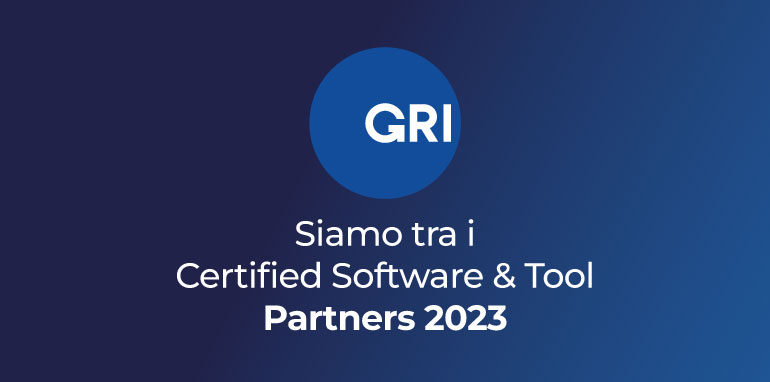
Just a few months after being certified by the Global Reporting Initiative (GRI), our ESG Assessment tool has gained a major new recognition: we are officially on the Certified Software Partners list. Partner Software & Tools: our tool for certified support We have always stood by companies on the path to decarbonization in a concrete and transparent way. As a certified GRI software partner, we assure our clients that our ESG Assessment accurately and relevantly integrates the GRI Standards, providing accurate analysis data. Software & Tools Partner is another representative piece of the certified support we provide to companies in measuring and assessing how they are managing against environmental, social and governance dimensions. The tool was developed entirely by the Tecno ESG Benefit Company team; a tool designed to promote long-term value creation by bringing out critical issues and priorities, increasing the organization’s awareness of the performance and impacts generated in each of the three areas, and suggesting improvement actions. ESG criteria: how to integrate them into business strategy The concept of sustainability evolves over time, hand in hand with changes involving the market and society. A key word in the field of sustainability is the acronym ESG – Environmental, Social, Governance – a fundamental parameter for the purpose of evaluating a company. While ESG criteria have become decisive for business growth, the adherence to and integration of these principles have increased awareness of the need to reshape corporate strategy, inspiring it with greater ethics, people’s well-being and environmental protection. It is in this context that our ESG Assessment fits, with which we accompany companies in implementing a consistent and correct corporate sustainability strategy . ESG assessment: areas of analysis and relevant issues Our ESG Assessment is divided into three areas: Environmental, Social and Governance; key issues are identified for each. In order to be able to return an objective snapshot of ESG performance, the company is asked to fill out a questionnaire, the questions of which are designed to understand how the relevant issues being analyzed are managed and how they are overseen. Upon completion of the questionnaire, the ESG Assessment is validated by our team; once validation is complete, a dashboard with the ESG performance obtained is visible in the platform. For each area examined, a comparison with the market is provided, highlighting the certifications obtained by competitors and the best practices implemented. The set of information present in the analysis areas and survey fields of our tool are constructed based on the contents of the UNI ISO 26000 standard (UNI/PdR 18:2016) and the international reporting standard GRI Standards. ESG Assessment and SDGs The ESG Assessment is structured taking into account the company’s industry and reference standards. The suggested improvement actions generate an important advantage for companies over competitors; they enable the development of an effective sustainability strategy that meets market and stakeholder demands. The 2030 Agenda for Sustainable Development is a global reference that draws the attention of organizations that are required to make an important contribution; that is why each action suggested by the ESG Assessment is linked to specific SDGs. The benefits of our ESG Assessment The ESG Assessment helps to become more aware of the performance and impacts generated by corporate activities. It represents a tool of considerable impact as it strengthens the link with stakeholders, the development and maintenance of policies implemented and certifications acquired, and the monitoring of sustainability performance over time, correlated with the objectives set; in addition, it enables the Sustainability Report to be fed. In fact, it is necessary for companies to take proactive actions in order to ensure that future disclosure requirements are met. The ESG Assessment is a useful aid to the accuracy of the data that are critical to the preparation of the Sustainability Report. With Tecno ESG you integrate a winning sustainability strategy The recognition obtained from GRI for our ESG Assessment is a key aspect of our growth; a further demonstration of our commitment and the transparency with which we approach the companies that choose us every day as partners in the strategic path of sustainability integration. Tecno ESG Benefit Society is at the side of companies to support and direct them to implement effective ESG strategies. We address ourselves to those who look forward to sustainability because they have understood its value for the company itself, for society, for the territory, and for the environment; but also to all companies that are just beginning to interface with new models of development and sustainable growth in order to generate a positive impact in the environmental, social, and governance spheres.
Carbon Border Adjustment Mechanism: new obligations for importing companies

With the publication of EU Regulation 2023/956 in the European Official Journal on May 16, 2023, the European Union formalizes the entry into force of the Carbon Border Adjustment Mechanism (CBAM). As of October 1, 2023, companies importing goods into Europe from outside Europe are required to comply with this mechanism, with obligations related to CO2 embedded in imported goods. In collaboration with Tecno Vat’s team of international tax experts, we ensure that all importing companies affected by EU Regulation 2023/956 receive the necessary environmental and bureaucratic advice and support to fulfill their CBAM obligations. What is CBAM: between CO2 calculation and payment obligations The CBAM – Carbon Border Adjustment Mechanism – is a mechanism the European Union introduces to adjust/adjust/compensate for carbon emissions from imported goods in member territories. Included in the “Fit for 55” program, the CBAM underscores the Union’s commitment to the 2030 GHG emission reduction and 2050 neutralization targets. In addition, this mechanism is a measure to counter environmental dumping and the relocation of high-emission production to countries outside Europe. What changes for companies importing products into Europe? If the imported commodity falls under the Combined Nomenclature codes listed in Annex I of EU Regulation 2023/956 (e.g., aluminum, iron, steel, and cast iron products; cement and cement products; fertilizers; electricity and hydrogen), the importing company must first comply with reporting requirements, then obtain authorized CBAM registrant status, and finally take a number of actions including paying the amounts due for CO2 incorporated into the imported goods. However, let us proceed in order and understand together, based on the upcoming deadlines, what needs to be done. The transition period and the reporting requirement From October 1, 2023 to December 31, 2025, the transitional period of the CBAM, importers are required to: Collect information regarding the installations of production facilities located abroad, Combined Nomenclature codes and origin of goods, CO2 emissions resulting from the production of the goods and their movement to the European border. The cooperation of the manufacturer/supplier or operator of the production facility located in the non-EU country is essential at this stage; Send quarterly CBAM report to the European Commission, detailing the total amount of CBAM goods incorporated, relative CO2 emissions and any costs incurred to address the emissions generated. Authorized registrant status and the full regime of the Regulations As of December 31, 2024, importing companies must obtain the status of authorized declarant; to achieve this, an application must be sent to the competent authority in the EU member state of origin (in the case of a non-EU resident importer, the indirect customs representative intervenes), await verification checks, and final entry in the CBAM registry as an authorized declarant. As of January 1, 2026, authorized declarants (importing companies or indirect customs representative) must: calculate the CO2 incorporated in imported products, submit the measurement made to verification by an accredited third party, and keep the notions useful for calculation for the next four years; Pay the amounts due for CO2 embedded in imported products through the purchase of CBAM certificates. Electronic documents purchasable by member states through platform managed by the EU Commission; by May 31 of the year following the import, return the certificates purchased through the CBAM registry (under implementation) and submit the CBAM declaration including: total number of issues, number of certificates purchased and returned, copy of the verification document issued by the accredited body. The importer must ensure that the total CBAM certificates purchased are able to offset at least 80 percent of the CO2 diffused into the atmosphere through imported goods during the year. Other annual deadlines to remember include June 30 and July 31: the former corresponds to the deadline by which the importer can ask the home member state to buy back any excess CBAM certificates; the latter represents the date by which the European Commission cancels certificates purchased and returned by the importer. Measure, verify and communicate: meet CBAM constraints with us We represent the corporate sustainability partner already of many business entities, won thanks to the professionalism and skill of our environmental engineers and consultants. Today, thanks to collaboration with Tecno Vat’s international tax experts, we are also able to meet the needs of companies where imports of goods with high emission levels, from third countries to EU member states, are a constant. If you would like to know the details of this collaboration and service opportunities, please fill out the form.
Gender parity certification: what changes with the new Procurement Code
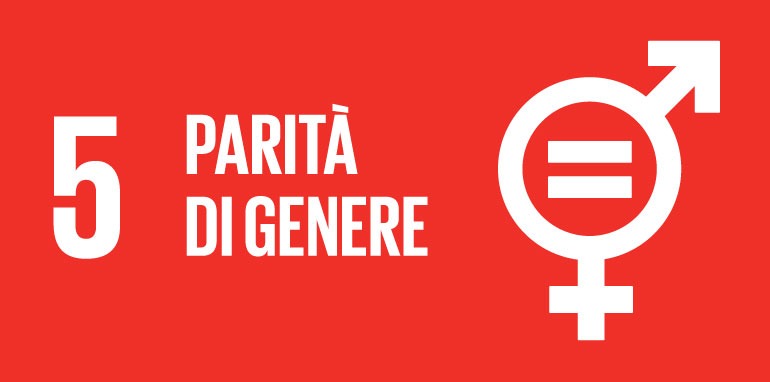
The Gender Equality Certification is a document that attests to the concrete policies and measures taken by employers to reduce the gender gap in relation to opportunities for growth in the company, equal pay for equal work, gender diversity management policies, and maternity protection. This is a certification that is gaining great relevance among companies because it can attract the attention of stakeholders and allow access to calls and incentives. Let’s find out together what will change for businesses as of July 1, 2023 as a result of changes to the new Public Contracts Code. Procurement Code 2023: from the old to the new version The new Procurement Code launched by the Meloni Government (Legislative Decree No. 36/2023) contains a specific reference to the promotion of gender equality in Article 108, which defines the “Criteria for the award of works, services and supply contracts.” An article that has been the subject of discussion to the extent that it was amended by the Decree-Law of May 29, 2023 no. 57. In fact, the Code of Public Contracts (Legislative Decree No. 50/2016) required contracting stations to indicate the rewarding score given to holders of gender parity certification in accordance with UNI PdR 125:2022, i.e., a certificate issued by an impartial third party. In contrast, the new Code of Contracts Legislative Decree 36/2023 (in Article 108, paragraph 7) stipulates that contracting stations shall consider a “higher score to be given to companies that attest, including through self-certification, that they meet the requirements of Article 46-bis of Legislative Decree. 198/2006 “. A change that leaves it up to the contracting stations to verify the reliability of both the self-certification and the requirements in place for certifying gender equality, and which has met with disapproval from several quarters. Accredia, for example, the accreditation body designated by the Italian government, has officially stated that it considers self-certification incapable of providing the same guarantees as an attestation issued by an accredited third party. Another substantial change, between the old and new versions of the Code, concerns the reduction of the incentives provided for companies wishing to acquire gender parity certification. Indeed, the Procurement Code 50/2016 granted the economic operator a 30% reduction of the security deposit to participate in accreditation procedures (not cumulative with other reductions). The new Code, on the other hand, reduces this percentage to 20 percent, however, making this facilitation cumulative with other reductions related to obtaining certifications or marks included in Annex II.13 of the Procurement Code. Decree Law No. 57/2023: goodbye self-certification for gender equality As of July 1, 2023, companies interested in winning bonus scores awarded by contracting stations-regarding gender parity certification-must deal with the recent amendment to Art. 108 of the new Procurement Code. The latter was revised by the government, which chose to intervene through Art. 2 of Decree-Law 57/2023 published on May 29, 2023, eliminating both references to self-certification of gender parity certification and verification of reliability: ” In order to promote gender equality, contracting stations shall provide in contract notices, notices and invitations, the highest score to be given to companies for the adoption of policies aimed at achieving gender equality evidenced by the possession of gender equality certification referred to in Article 46 -bis of the Code of Equal Opportunities for Men and Women, referred to in Legislative Decree April 11, 2006, no. 198 .” Self-certification drawn up and initialed by the company itself is no longer recognized; therefore, companies will only be able to prove possession of gender parity certification through verified attestations and merit the highest score attributable by the contracting station. Gender equality certification: choose Tecno! By certifying gender equality, your company-as well as contributing to the development of an inclusive and sustainable economy-will be able to access attractive tax breaks and achieve higher scores in public procurement rankings. Our team is ready to support your company in defining a strategy aimed at eliminating gender gaps and an increasingly virtuous work climate. All you have to do is leave your details in the contact form below and our counselors will contact you. The first meeting is free of charge!
Our ESG Assessment tool: among the first in Italy certified and validated by GRI
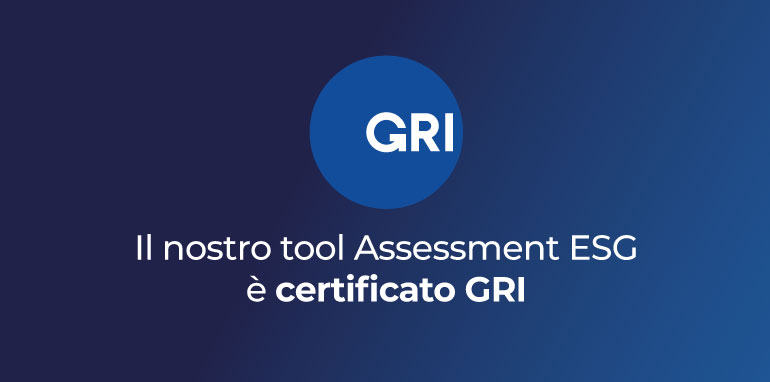
One year after the development of our online platform dedicated to ESG Assessment for the real assessment of the level of sustainability oversight, today GRI recognizes and certifies our work, among the first in Italy. From promotion to action: our contribution to a sustainable future We have chosen to guide companies toward sustainable transition, helping them improve their environmental as well as social and governance performance with customized strategies and targeted interventions. To make our intervention increasingly effective, we have supported them in understanding ESG issues, concepts and criteria that are new to some and have become fundamental for measuring and communicating their impacts. We have done this using all the means at our disposal, through events and trainings, moments of discussion with experts in the field and also through the definition of ad hoc tools, for measuring, reporting and communicating their ESG impacts. The Assessment ESG tool is one of these. ESG assessment: the features and benefits of our tool Our ESG Assessment is a measurement tool that allows organizations to obtain an assessment about sustainability performance in the three areas of sustainable development: environmental, social and governance. The tool interrogates the organization by means of a questionnaire consisting of questions differentiated according to the sector they belong to, each of which is accompanied by a brief theoretical explanation that makes it easy to understand the topic addressed. All responses provided become a useful survey element in determining the organization’s ESG score and the drafting of the report. The latter consists of the final document returned by the platform, which highlights any existing gaps, ESG risks and provides both an initial materiality analysis and details of possible improvement actions. What makes our tool different from others on the market? Among the first in Italy validated and certified by GRI; It includes the study of as many as 60 sub-sectors; It returns a consistent and accurate analysis; Includes identification of major material issues; It allows you to identify your status or level of sustainability presidium: high impact, full immersion or limitless. GRI: the body and international standards The Global Reporting Initiative (GRI) is a nonprofit body of international significance. Founded in Boston in 1997 as a division of CERES (Coalition for Environmentally Responsible Economies), it has been an independent body based in Amsterdam since 2001 and is an authoritative body for identifying sustainability reporting standards. Its mission is to help organizations be transparent and take responsibility for their impacts for sustainable change. To center its goals, the GRI collaborates with policymakers, labor organizations, civil society and many others; expands its network with offices located in multiple parts of the world (the United States, Colombia, Singapore, Africa, Brazil, etc.); and implements and makes available to organizations useful guidelines for measuring and reporting their environmental, social and economic impacts. Following continuous updates, the guidelines have been replaced by a framework of reference standards, the GRI standards, used by 78 percent of the world’s largest companies based on turnover (KPMG Survey of Sustainability Reporting 2022). A predominant concept attented to by GRI is materiality, because it becomes essential to understand the significance of one’s actual and potential, short- and long-term, positive and negative impacts on the environment, society and the global economy. Only in this way can their significance be assessed and action taken with ameliorative or mitigative measures. Reporting sustainability: our responses to European and market demands In order to achieve the European targets for reducing CO2 emissions to 2030, for carbon neutrality to 2050, and to act towards the UN-defined Sustainable Development Goals, all organizations are called upon to contribute, and the best way to do this is to make use of experienced partners and certified tools. Our Group’s response translates into a twofold commitment: as a company and as a promoter of sustainable business models, characterized by effective tools and methods, so that the analysis of its own sustainability performance combined with actions to reduce/mitigate its impacts are recognized by stakeholders and shareholders as virtuous actions and not window dressing.


